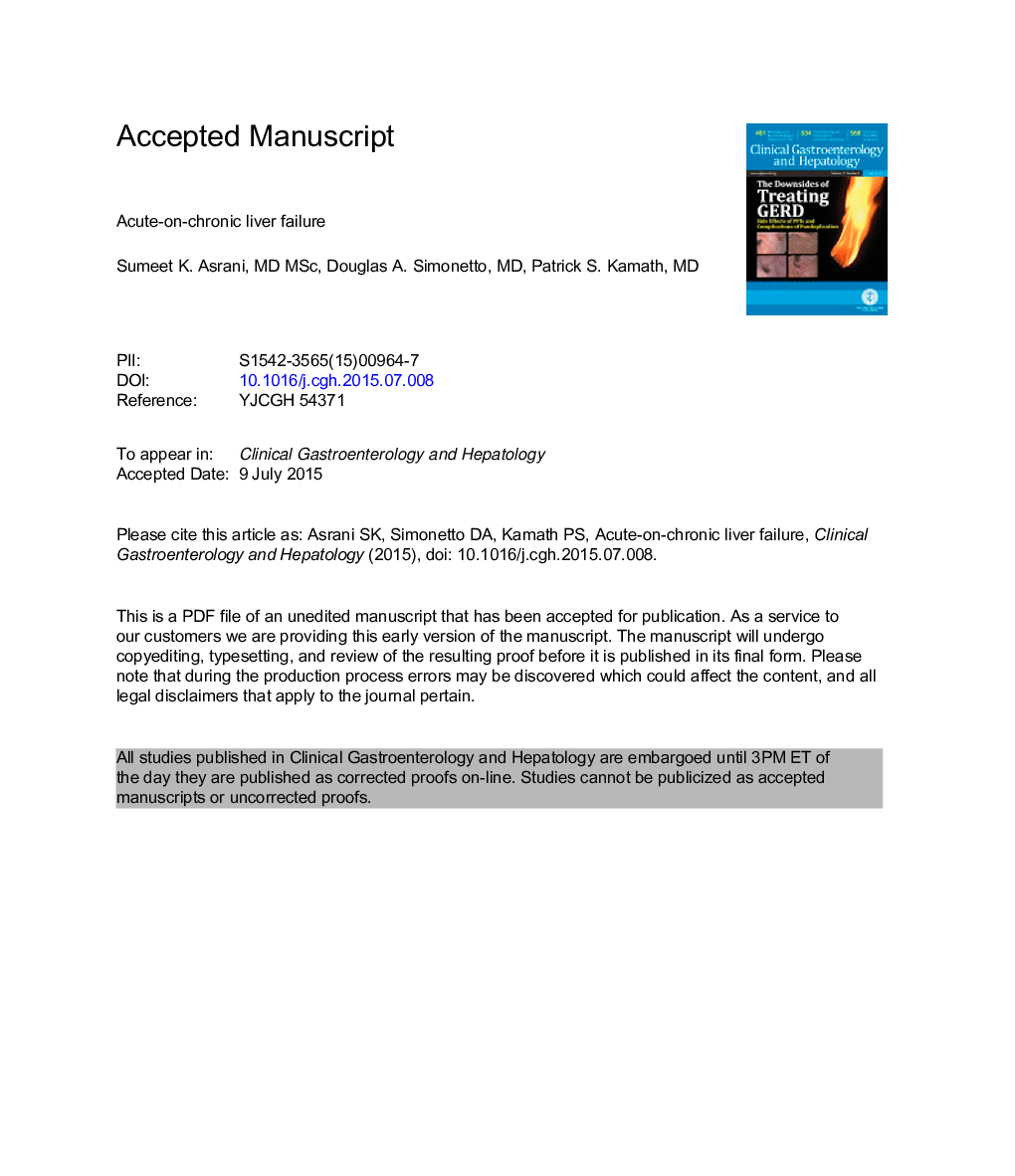| Article ID | Journal | Published Year | Pages | File Type |
|---|---|---|---|---|
| 3281613 | Clinical Gastroenterology and Hepatology | 2015 | 38 Pages |
Abstract
Over the past 2 decades, the concept of acute-on-chronic liver failure (ACLF) has been proposed as an alternate path in the natural history of decompensated cirrhosis. ACLF thus is characterized by the presence of a precipitating event (identified or unidentified) in subjects with underlying chronic liver disease leading to rapid progression of liver injury and ending in multi-organ dysfunction characterized by high short-term mortality. Multiple organ failure and an increased risk for mortality are key to the diagnosis of ACLF. The prevalence of ACLF ranges from 24% to 40% in hospitalized patients. The pathophysiological basis of ACLF can be explained using the following 4-part model: predisposing event, injury caused by a precipitating event, response to injury, and organ failure. Although several mathematic scores have been proposed for identifying outcomes with ACLF, it is as yet unclear whether these organ failure scores are truly prognostic or only reflective of the dying process. Treatment paradigms continue to evolve but consist of early recognition, supportive intensive care, and consideration of liver transplantation before onset of irreversible multiple organ failure.
Keywords
CLIFLPSDAMPACLFHRSALFhepatic encephalopathySequential Organ Failure Assessmentdamage-associated molecular patterninterleukinhepatorenal syndromeSepsisCirrhosisAcute Kidney Injury NetworklipopolysaccharideModel for End-Stage Liver Diseaseacute-on-chronic liver failureAcute liver failurechronic liver failureHBVAKINhepatitis B virusPortal hypertensionLiver transplantationSOFAMELD
Related Topics
Health Sciences
Medicine and Dentistry
Gastroenterology
Authors
Sumeet K. Asrani, Douglas A. Simonetto, Patrick S. Kamath,
